Quite a lot of people use the balcony as a place to store certain things. However, this part of the house can be used more rationally, for example, to create a place to relax. For those who do not litter this kind of terrace, it will be useful to know how to insulate the balcony from the inside with their own hands in a brick house, see step-by-step photos of the process.
Content
Which heat-insulating material should be preferred
Before you insulate the balcony from the inside with your own hands in a brick house according to step-by-step photos, you need to choose a good thermal insulation material.
- Styrofoam. This material is one of the cheapest, but it has high heat-insulating properties. Nevertheless, it is necessary to know about some of the disadvantages of the foam. The sheets are thick, so if you use this material, you will further reduce the already small space of the balcony. Polyfoam is also a highly flammable material, so if suddenly a burning cigarette butt accidentally gets onto the balcony, then a fire cannot be avoided.
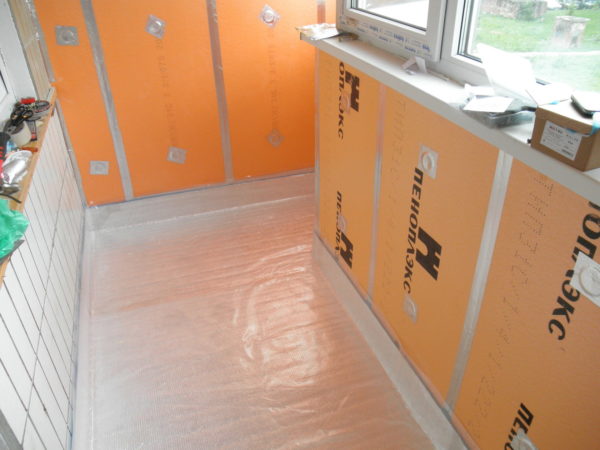
Read more: How to insulate the walls of the house from the inside
- Penoplex. Thanks to a special manufacturing technique, this material has a smaller thickness than the foam, but at the same time retains the same heat-insulating qualities. Penoplex has increased mechanical strength, but at the same time at a price more expensive than the first material.
- Penofol. It is a foamed polyethylene, which is protected on both sides by aluminum foil. This foil protects at the same time from the winds and from high humidity. For insulation, it is enough to use sheets with a thickness of several millimeters.
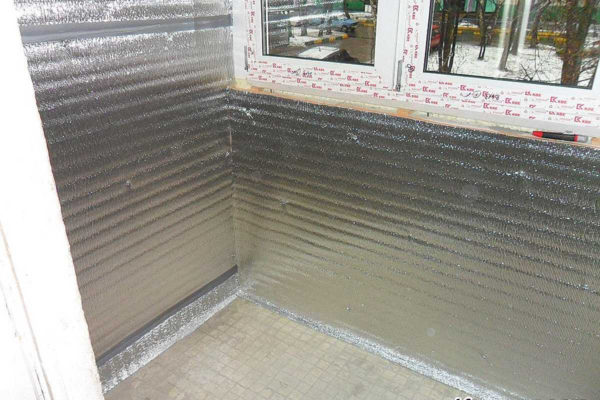
- Mineral wool. A significant plus of the material is not only in high heat-insulating properties, but also in its increased moisture resistance. Minvata protects against condensation on the windows, but mold often forms in it. Therefore, it is necessary to periodically check its condition.
What other materials will be required
Before using a step-by-step photo to insulate the balcony from the inside with your own hands in a brick house, you must first decide on the materials that will be required for work:
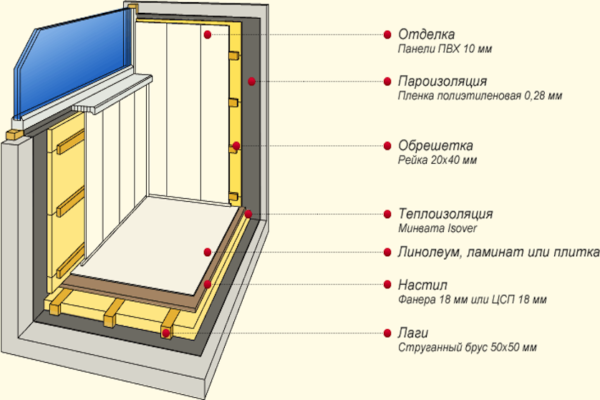
- Gas silicate blocks - in order to build a parapet.
- Cement based adhesive to lay the parapet.
- Insulation, which can be both rolled and in the form of plates.
- Wooden slats - for mounting a heat insulator.
- Self-tapping screws - for mounting the lathing.
- Special glue - if sheet material will be used.
- A plastic film that will help create both hydro and vapor barrier.
- Foam for fixing work.
Read more:How to insulate the attic for winter living
Process step by step
After all the materials are collected, you can proceed directly to the process itself. Before you insulate the balcony from the inside with your own hands in a brick house by step-by-step photos, you will need to inspect the entire terrace for any damage.
Preparatory stage
If cracks are detected, they will need to be repaired at the preparatory stage, since otherwise warming will not make sense.
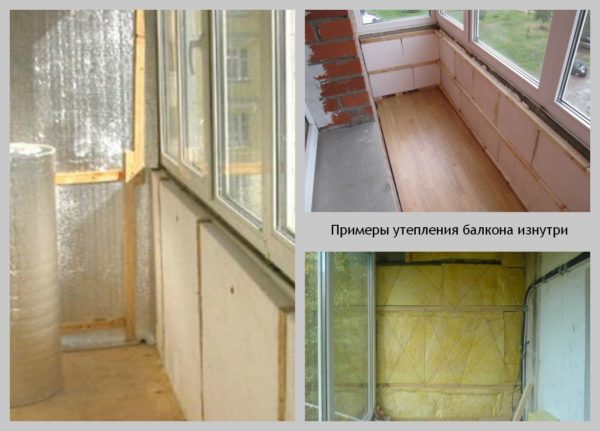
If gaps are found, use sealant or foam. The surplus that formed at the end must be carefully cut and leveled.
Read more:16 most useful items for storing things from AliExpress up to 300 rubles
Insulation
For insulation, not only foam blocks are used, but also aerated concrete, since both of them are able to reliably store heat. Due to the fact that aerated concrete is able to absorb water, many people use foam blocks. In them, all air cells are closed from moisture.
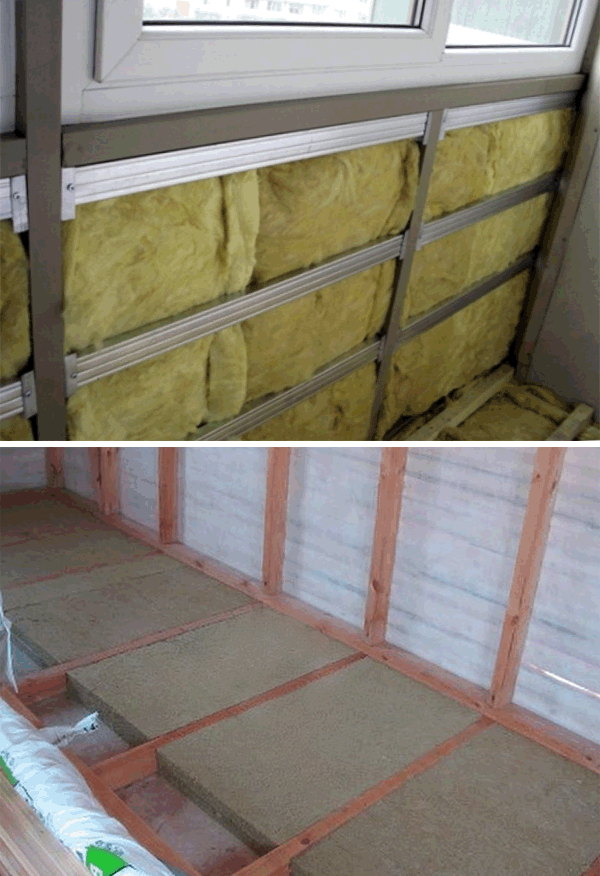
Styling Tips:
- If the area of the balcony allows, it is better not to remove the metal partitions, but to reinforce them with reinforcement.
- Fasten the parapet with fittings.
- Putting blocks is required using special glue and not on concrete mortar.
- For the first row you will need to make the glue a little thicker than for other layers.
- In the places of joining, it is necessary to file the blocks so that they better fit together.
Read more:Luxurious two-story Moscow apartment of Leonid Agutin and Angelika Varum (photo)
Wall and ceiling insulation
The insulation of the walls and ceiling on the balcony is as follows:
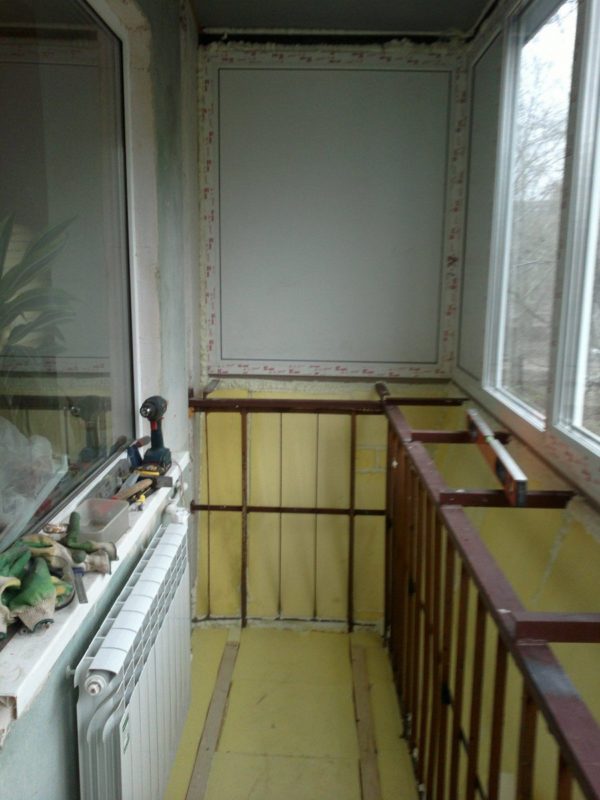
- First of all, it is necessary to lay a waterproofing film to form overlaps. Use a scotch tape or stapler to fasten.
- The main load will fall on the crate, so the wooden bars need to be attached to the ceiling with strong self-tapping screws.
- Leave a small gap between the rails so that they do not deform under a sharp temperature difference.
- Roll material, as well as plates, must be laid so that they are as close as possible to each other.
- The gaps between the plates must be filled with construction foam.
- The next layer is vapor barrier, which is made of plastic film and membrane materials.
- After that, you can put a second layer to secure the finishing material.
- Gypsum sheets must be used for cladding. As the latter, plywood or lining is used.
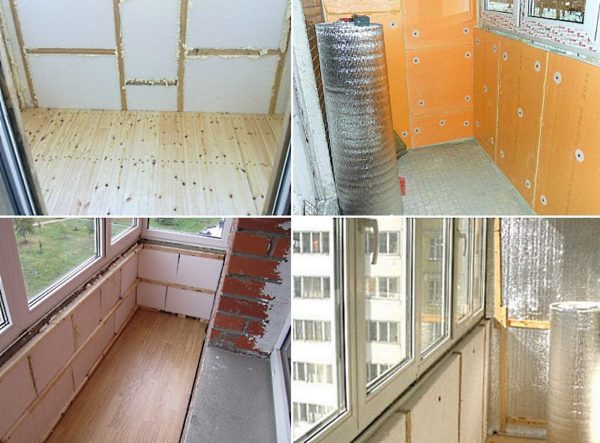
Floor insulation
The final stage is the insulation of the floor.
- After installing the waterproofing layer, a wooden beam is attached to the floor, which must first be treated with an antiseptic or coated with drying oil.
- It is necessary to arrange the logs so that there is a distance of about 50-70 mm from the walls.
- The balcony slab must be made with a slight slope to ensure a normal flow of water.
- To ensure that the floor surface is horizontal, you will need to use auxiliary material, for example, pieces of plywood.
- Between the lags, install a layer of heat insulator.
- The next layer should be vapor barrier.
- The floor is poured with a small layer of cement screed.
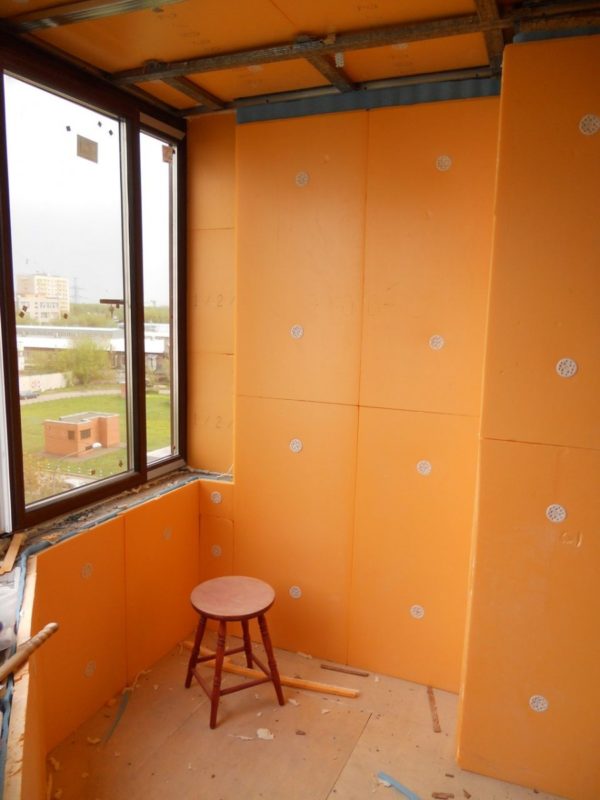
Many people have questions about how to insulate a balcony from the inside with their own hands in a brick house, since in the modern world this type of work is expensive. But if you follow all the instructions and stock up with the necessary materials, then when warming the balcony, you can not resort to outside help, but do everything yourself.

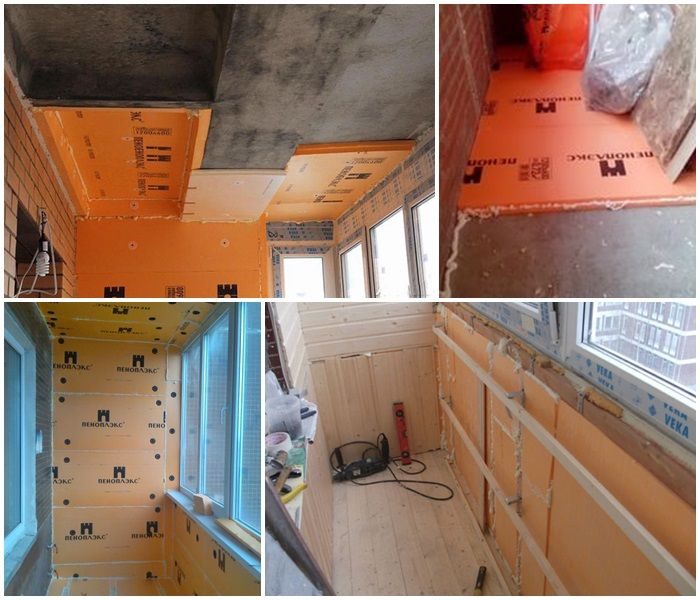



Alas, no comments yet. Be the first!